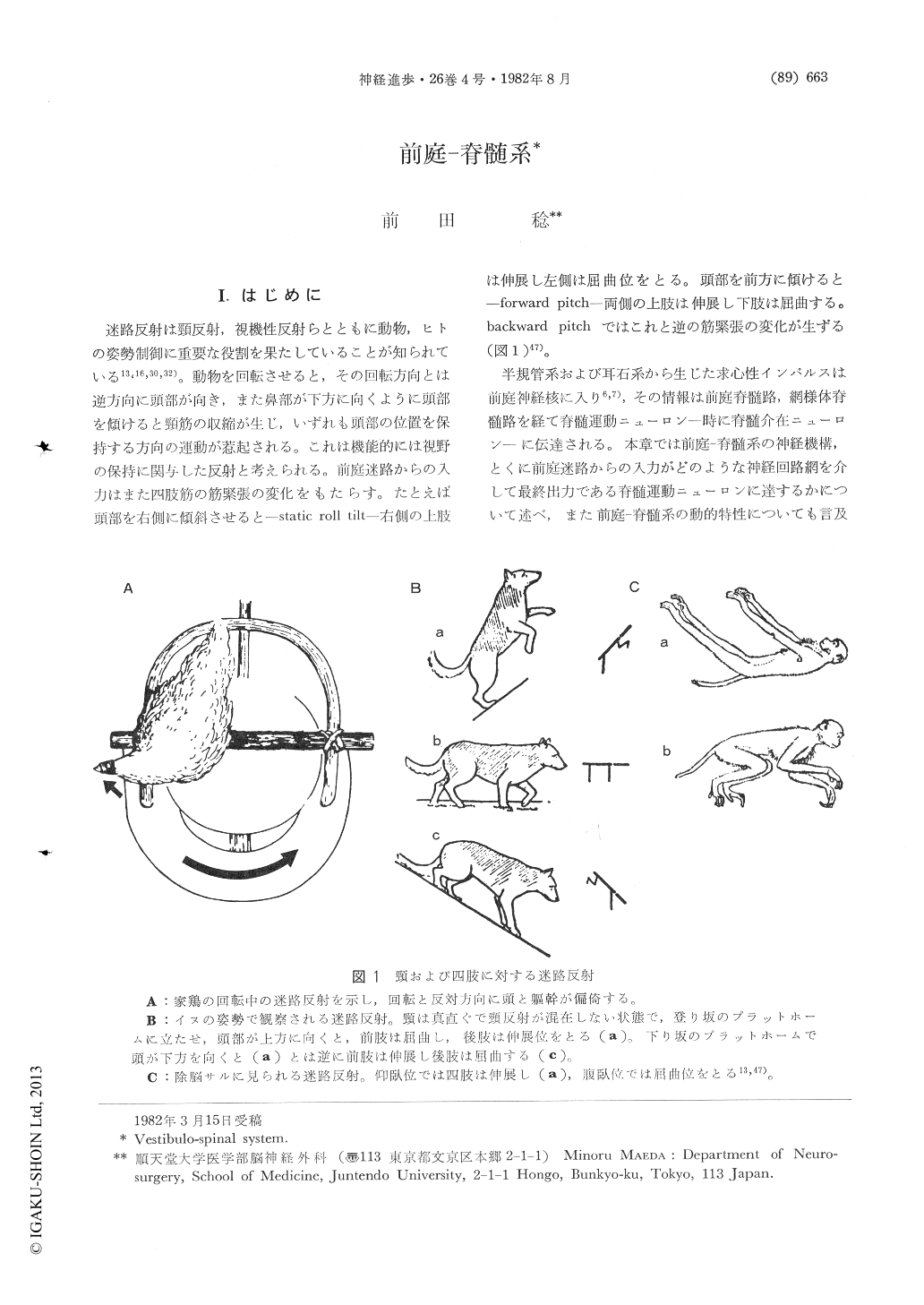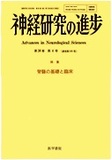Japanese
English
- 有料閲覧
- Abstract 文献概要
- 1ページ目 Look Inside
I.はじめに
迷路反射は頸反射,視機性反射らとともに動物,ヒトの姿勢制御に重要な役割を果たしていることが知られている13,16,30,32)。動物を回転させると,その回転方向とは逆方向に頭部が向き,また鼻部が下方に向くように頭部を傾けると頸筋の収縮が生じ,いずれも頭部の位置を保持する方向の運動が惹起される。これは機能的には視野の保持に関与した反射と考えられる。前庭迷路からの入力はまた四肢筋の筋緊張の変化をもたらす。たとえば頭部を右側に傾斜させると―static roll tilt―右側の上肢は伸展し左側は屈曲位をとる。頭部を前方に傾けると―forward pitch―両側の上肢は伸展し下肢は屈曲する。backward pitchではこれと逆の筋緊張の変化が生ずる(図1)47)。
半規管系および耳石系から生じた求心性インパルスは前庭神経核に入り6,7),その情報は前庭脊髄路,網様体脊髄路を経て脊髄運動ニューロン―時に脊髄介在ニューロン―に伝達される。本章では前庭—脊髄系の神経機構,とくに前庭迷路からの入力がどのような神経回路網を介して最終出力である脊髄運動ニューロンに達するかについて述べ,また前庭—脊髄系の動的特性についても言及したい。
It has been generally accepted that the vestibular reflex together with neck and visuomotor reflexes, plays an important role in the control of posture. Activation of the peripheral labyrinth leads to reflexes of the body and limb musculature. For instance, if an animal is rotated to one side the head turns in the opposite direction. When the animal is tilted nose down, the dorsal neck muscle contracts, accompaning by changes in the tone of the limb musculature.

Copyright © 1982, Igaku-Shoin Ltd. All rights reserved.


